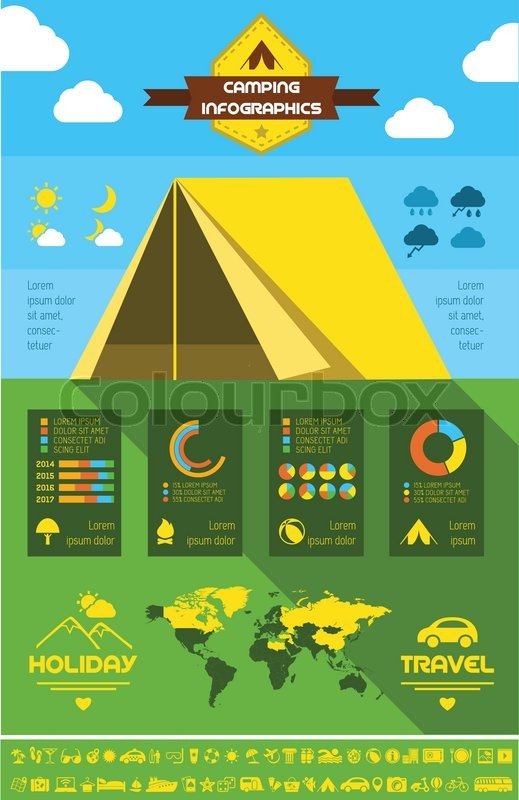Bell camping tents are coming to be increasingly preferred as functional, trendy shelters for camping and glamping. Yet what's the background behind this long-lasting style?
How do you dry a tent fast?
Henry Hopkins Sibley patented the single-pole cone-shaped outdoor tents that we understand as a bell tent. However, he abandoned to the Confederacy and never obtained his royalties.
Inevitably, another person included brief wall surfaces to the cone canopy and invented what we now referred to as a bell outdoor tents.
Beginnings
The popularity of bell camping tents is growing, and they're currently a staple at outdoor camping festivals and as trendy backyard resorts. Their large insides give an adaptable home from home environment that's perfect for households and teams of good friends, while the round design assists with security in solid winds.
The layout of the modern-day bell outdoor tents can be traced back to military tents utilized by European militaries throughout the Crimean Battle in 1853-1856. Then, in America, a soldier called Henry Hopkins Sibley patented a comparable framework that drew inspiration from American Tipis.
Both styles are still in use today. Nevertheless, Sibley camping tents vary from their more recent cousins in that they have side walls and an increased bigger entry. Sibley tents also depend on a single central post for assistance that makes them less complex to establish yet restricts setup alternatives.
Objective
Bell outdoors tents' one-of-a-kind shape and spacious interiors make them the ideal selection for a wide variety of outside tasks. Whether you're hosting a yard camping party, glamping at a remote all-natural hideaway or taking place a legendary fantasy-inspired journey, the convenience of these outdoors tents makes sure that your experience will certainly fit and elegant.
The bell-shaped camping tent was initially patented in 1856 by Henry Hopkins Sibley, who had designed the design after observing Indigenous American tipi outdoors tents. Nonetheless, he surrendered from the United States Army at the outbreak of the Civil War, waiving his civil liberties to future nobilities.
Ever since, the design has actually ended up being a staple of numerous glamping experiences. These elegant tents typically feature deluxe bed linens and en-suite shower rooms, providing campers the opportunity to enjoy nature without sacrificing convenience.
Style
In the modern, bell tents have actually experienced a rebirth in appeal, as people look for a more immersive exterior experience. They are utilized in a range of settings, including outdoor camping, glamping, and events. Their distinct shape, spacious insides, and fairly easy setting up make them a preferred option for those seeking a classy, historical flair to their outdoor experiences.
The distinct form of a bell tent creates high ceilings and enough headroom, making it comfortable to stand in and walk around. Additionally, the center post is not put near the entrance of the outdoor tents, enabling more personal privacy and space inside the sanctuary.
The bell outdoor tents style traces back to an American soldier named Henry Hopkins Sibley, that was inspired by Indigenous American tipi camping tents when developing his variation of the bell camping tent in 1856. His design was a substantial enhancement over traditional military tents, which were hard to carry due to their difficult building.
Materials
In contemporary times, Bell Tents are crafted from premium products that are developed for durable toughness. This is why they are a popular selection amongst recreational campers, festival-goers, and glampers alike.
In the 19th century, a United States Army officer named Henry Hopkins Sibley adapted standard tents right into what is now referred to as the modern bell outdoor tents. He based his design on Indigenous American Tipi structures, including short wall surfaces to the central post frame that made it extra stable.
Today, polycotton canvas is an usual material made use of in the construction of bell outdoors tents. This mix of cotton and polyester offers a large range of benefits, consisting of breathability, superior climate resistance, and easier maintenance than pure cotton canvas. This fabric is likewise sturdy and abrasion-resistant. It is thicker than many nylon textiles, however, which can make it hefty and more expensive than regular camping tents.
Contemporary
In modern day, the appeal of Bell Tents has actually blown up thanks to glamping sites and festivals providing these spacious camping tents for pairs, groups and households to appreciate. The aesthetic charm and longevity of these circular outdoors tents are appealing to numerous campers.
Whether it be rainfall or wind, these tents hold their own versus the elements. Usually, they're made with canvas that is dealt with to protect against wetness, mold and UV rays.
What are the five types of camping?
It isn't clear specifically when these camping tents were designed, however it's extensively understood that they're a variant of a Sibley camping tent - called after Henry Hopkins Sibley, who adjusted the design of the American Indian tipi. It is assumed that whoever added brief walls to Sibley's cone cover was responsible for the production of the bell tent as we camping gift ideas for women understand it today.
